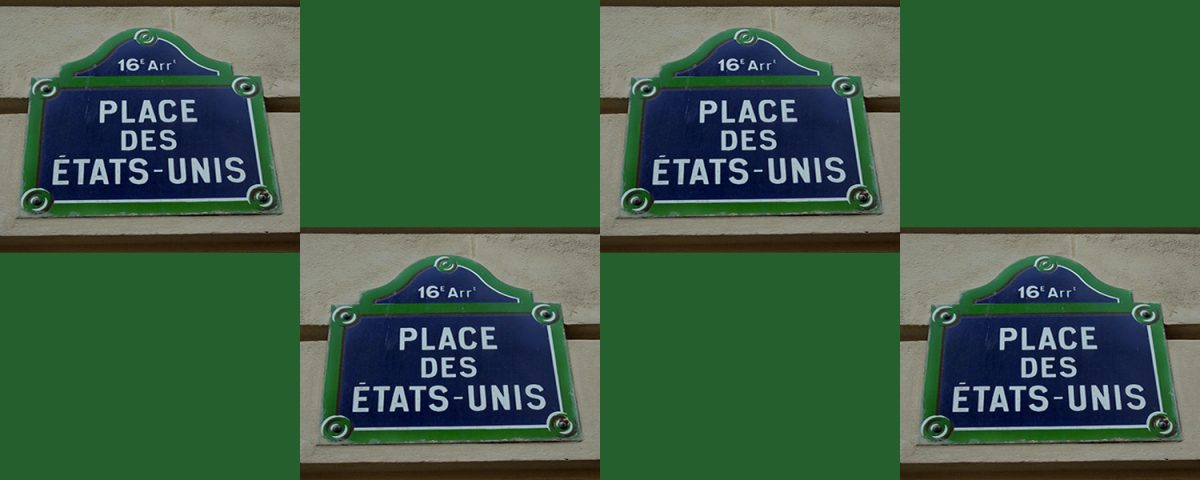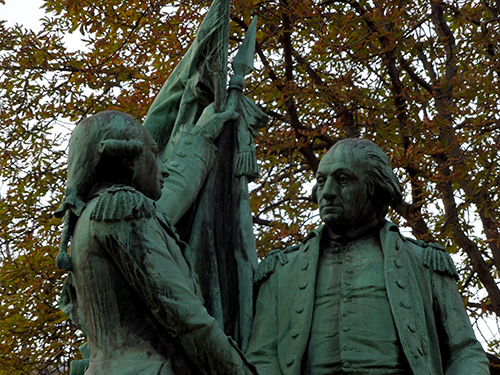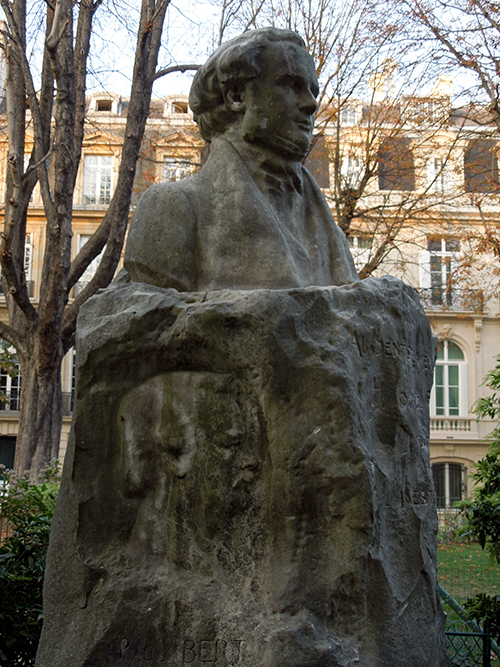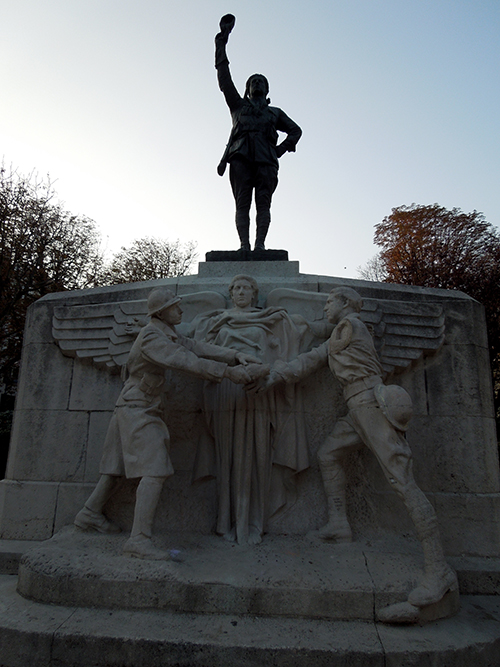 Visit the Place des Etats-Unis or « United States Square », a public space in the 16th arrondissement of Paris, France, about 500 m south of the Place de l’Étoile and the Arc de Triomphe.
Visit the Place des Etats-Unis or « United States Square », a public space in the 16th arrondissement of Paris, France, about 500 m south of the Place de l’Étoile and the Arc de Triomphe.
It is a tree-lined, landscaped square, approximately 140 meters long and 30 meters wide which forms a pleasant and shady pocket park. The park in the center is officially named Square Thomas Jefferson, but buildings on three sides have Place-des-États-Unis addresses. Place des Etats-Unis contains several monuments to American participation in WWI and the American Revolution.
The Place des États-Unis was originally called Place de Bitche to honor a town in the Moselle department in northeastern France that valiantly resisted Prussian invasion in 1870. Levi P. Morton, the American ambassador to France, established at number 3 Place de Bitche, his residence and the United States embassy in 1881. The square’s name was changed after the similarity between the name of the Moselle city and the English swear word, bitch, made the Americans uncomfortable. The French prefect arranged for the name, Place de Bitche, to be transferred to another site in the 19th arrondissement, near the Pont de Crimée. He renamed the square outside the ambassador’s legation as Place des États-Unis. (Ironically today you’ll find the Embassies of Kuwait and Bahrain on Place des Etats-Unis – you can’t help but wonder if they would like to see it renamed.)

Lafayette and Washington, close friends and commrades
The Place des Etat-Unis is connected with the American Revolution in two ways. For a few years in the 1880s a model of the Statue of Liberty adorned the square. In 1895 publisher Joseph Pulitzer, impressed by Bartholdi’s Statue of Liberty, commissioned him to produce another statue of French-American friendship. This sculpture depicts the friends and commrades in arms General George Washington and Gilbert du Motier, better know as the Marquis de Lafayette. They are in military uniforms, shaking hands with the French and American flags as a backdrop. The eastern end of the square is passed by the Avenue d’Iéna and an intersection of streets known as the Place de l’Amiral de Grasse. Admiral de Grasse is best known for his command of the French fleet at the Battle of the Chesapeake in 1781, which led directly to the British surrender at Yorktown in the American Revolutionary War and brought about the rebels’ victory, thus it is appropriate that his eponymous street connects with Place des Etats-Unis. Over time the US military has named three ships after de Grasse. In the nearby Trocadéro Gardens there is a bas relief sculpture of de Grasse, sponsored by American-in-Paris Kingsley Macomber in 1931 and created by Paul Landowski. And nearby, on avenue Pierre 1er de Serbie, you’ll find another French Revolutionary War hero: Rochambeau, plus an equestrian of George Washington on Place d’Iéna. When we stopped by he was flying a French flag on his sword tip – surely a bit of leftover world cup euphoria!

Back to the Place des Etats-Unis: Elsewhere on the square is a sculpture of American dentist, Horace Wells (1815–1848), who was a pioneer in the use of anesthesia. Dr Wells had travelled to Paris in 1847, where he petitioned the Academie Royale de Medicine and the Parisian Medical Society for recognition in the discovery of anesthesia. They did finally recognize his work, just a few days before his death. On the side of his monument is a relief of Paul Bert, a French anesthesia pioneer.

A fourth monument on the Place des Etats-Unis, and the reason you should visit this 11th of November, is the Memorial to American Volunteers of WWI.
Yet sought they neither recompense nor praise nor to be mentioned in another breath thean their blue coated comrades whose great days it was their pride to share by share even to the death. Hail brothers and farewell, you are twice blest brave hearts double your glory is who perished thus for you have died for France and vindicated us.
You’ll also find a bust of Myron T. Herrick, American ambassador to France during the first world war 1912 to 1914, and again in 1921 à 1929. Mr Herrick was instrumental in establishing the American response to WWI thus beginning the American Ambulance Hospital.
Other visits you can make to commemorate the end of WWI:
- Chateau Thierry where the Doughboys fought a particularly decisive battle at the beginning of the end of WWI which we commemorate every Veteran’s Day which coincides with the Armistice which was declared at the eleventh hour of the eleventh day, of the eleventh month.
- Visit the memorial to the Lafayette Escadrille in Marnes la Coquette just west of Paris.
- Another American memorial space just outside Paris is the Suresnes Cemetery. It’s an American Battle Monuments Commission cemetary with the signature alignements of graves. It contains the remains of 1,559 Americans who died in World War I. There is also a lovely view over Paris.


